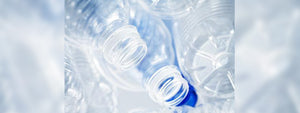NHB's ECO FRIENDLY News Blogs — Molded Bamboo
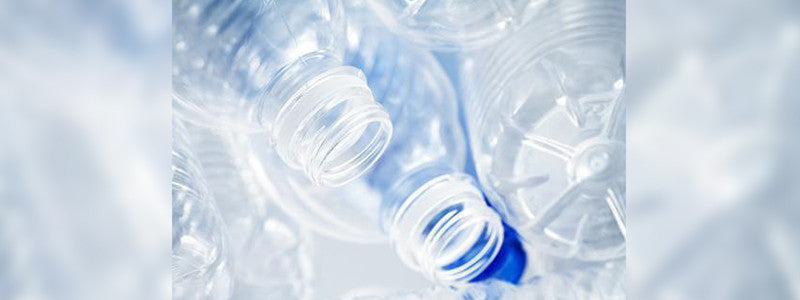
Why Are You Still Using Plastic In Your Kitchen?
Why are you still using plastic in your kitchen?
Knowing that the majority of plastics contain something called BPA or bisphenol A, which is known to be a TOXIC endocrine disruptor meaning that it disrupts the body’s hormonal system and can also affect your immune system, why are you still using plastic in the kitchen???
“Many researchers believe BPA can produce many health-related problems, such as early puberty in females, reduced sperm counts, altered functions of reproductive organs, obesity, altered sex-specific behaviors, and increased rates of some breast, ovarian, testicular, and prostate cancers. BPA is especially dangerous for fetuses, babies, and young children who are still developing and who don’t have the same detoxification abilities as older children and adults. Kids who are exposed to higher levels of BPA have been shown to have more obesity, depression, and inattention, for instance.”[5]
Even Tupperware that is claimed to be “microwave-safe”, might not be all that safe. Prolonged exposure to heat can cause plastics to break down and leach chemicals that no one would want inside their bodies if they could help it. Some labels even confidently show “BPA-FREE” on the front of it, however, just because it’s not made with BPA doesn’t mean that the company didn’t just substitute for a different hormone-disrupting chemical in place of the BPA. "However, recent studies provide evidence that some BPA free plastics aren’t really BPA-free, while other studies show that the BPA-free plastic alternatives may not be any better, and may be even worse, in terms of their toxicity"[5]
So why don’t you help it?! It can be a simple task to reduce your exposure to BPA.
Ways to reduce your exposure to BPA:
- Switch to Molded Bamboo® cooking utensils, serving utensils, dinnerware, and bowls
- Avoid using plastic cooking utensils when cooking over the stove - opt in for these instead
- Switch to a different type of storage to store leftover in, such as glass, or Molded Bamboo®
- DO NOT microwave food in plastic containers
- B.Y.O.B (Bring your own bottle) - there are so many alternatives to using plastic water bottles, choose one that's healthy for YOU & the planet!
- Avoid leaving store bought plastic water bottles in a hot car and drinking from them
So What is Molded Bamboo®?
-
Molded Bamboo® is our patented technology, created from 100% sustainable bamboo, and natural fibers
-
It's 100% plastic free, BPA free, melamine free, & chemical free
-
Its shiny appearance is due to our special molds during the manufacturing process - there are absolutely zero chemical coatings
-
Molded Bamboo® won't leach chemicals or toxins when exposed to heat, or extensive use, because, well - there are no chemicals to leach!
BPA Free & Plastic Free Molded Bamboo Bowls
Some other topics you might enjoy:
Sources:
[1]http://universityhealthnews.com/daily/nutrition/is-tupperware-bpa-free/
[2]http://www.sciencedirect.com/science/article/pii/S0300483X13000565
[3]https://www.ncbi.nlm.nih.gov/pubmed/23994667
[4]https://www.ncbi.nlm.nih.gov/pubmed/23485653
[5]https://universityhealthnews.com/daily/nutrition/bpa-free-plastics-get-canned/
- Gabriella De Luca
- Tags: Molded Bamboo
Recycle Numbers On The Bottom Of Plastics
Ever wonder what those little numbers on the bottom of food containers, cups, and plastics are?
Here's a guide to what they mean!
Did you know that the use of plastics should be limited if at all possible, but some are safer than others?!
Let's learn a little bit about the multiple plastics we use to eat and drink from on a day to day basis and the type of impact they have on you, and the environment.
Every plastic container or bottle has a recycling symbol. This symbol is a number ranging from 1 to 7 within a triangle. These little numbers can actually offer a great amount of information in regards to toxic chemicals used in the plastic, how likely the plastic is to leach these chemicals, how bio-degradable the plastic is, and conclusively, the safety of the plastic.
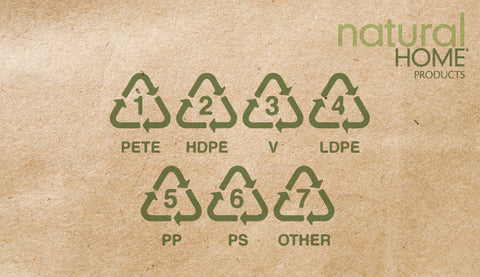
Look for these numbers before you buy!
Safer choices are symbolized with a 1,2,4 and 5
Avoid 3,6 and most plastics labeled 7 (some labeled #7 are in fact compostable, it usually states this on the packaging or container)
The Meanings of The Recycling Symbols:
Plastic #1 - PETE or PET (Polyethylene Terephthalate) Yes- Recycle this
-
A plastic resin and the most common type of polyester.
-
Widely accepted by the majority of curb side pick ups
-
Many water bottles, beverages, food items (peanut butter containers, salad dressing bottles, fruit containers), & other consumer products (like shampoo bottles & mouthwash containers) are constructed with packaging made from PET.
-
Manufactures use this because it's strong, transparent, & versatile. Some consider it safe, but this plastic is known to collect bacteria that accumulates.
-
Up to 100% of PET packaging can be made from recycled PET. This plastic can be recycled again & again. It's also recycled into carpeting fibers, t-shirt fabrics or fleece jackets, dog beds, winter coats, and automotive parts such as door panels & bumpers. [1]
-
The longer a liquid is left in a PET container, the greater chances Antimony Trioxide (used as flame retardant or catalyst) is released, same with warm temperatures like inside cars, garages, and enclosed areas.
Plastic #2 - HDPE (High Density Polyethylene) - Yes Recycle This
-
A polyethlene thermoplastic made from petroleum - One of the most commonly used plastics in the United States
-
Widely accepted by curbside pickups
-
Typically found in milk jugs, plastic bags, refillable plastic bottles, detergent bottles, yogurt tubs, plastic lumber, lawn & garden products, buckets & crates.
-
Plastic #2 is typically opaque in color, and is picked up by most curbside recycling programs.
-
This plastic is one of the 4 plastics that is considered to be safe and has a lower risk of leaching. Some studies have shown that this can leach the endocrine disruptor nonylphenol in both aquatic and human life, especially when exposed to sunlight.
-
It resists insects, rot, & other chemicals
-
By recycling your #2 plastics, you help create new: pens, recycling containers, detergent bottles, lumber, fencing, water pipes, fireworks plus more. [2]
-
Some alternatives you can use to avoid this plastic are glass or stainless steel reusable water bottles and food storage containers, and use recycled bags. Recycle plastics with #2 if you must use them.
Plastic #3 - V or PVC (Vinyl)- Not Usually Picked Up Curbside Polyvinyl chloride - the third most widely produced synthetic plastic made of 57% chlorine & 43% carbon.
-
Most commonly used to made drainage/sewage/plumbing pipes, food wrap, and detergent bottles, chemical storage tanks & plant piping; PVC has excellent chemical resistance together with good mechanical properties, making this an ideal for all the listed above.
-
Human Health : Dioxins are created in the manufacturing and production of PVC. Dioxins are highly toxic and can lead to developmental and reproductive disease, immune system damage, and cancer. [3]
-
Dumping PVC in landfill takes up a lot of land and is a waste of a valuable resource. PVC compounds are 100% recyclable. Most PVC products are lightweight and take up a lot of space, and may lasts for hundreds of years without degrading.
-
PVC can be recycled into: cables, flooring, park benches, speed bumps & traffic cones, film plastic, and decking & fencing. [4]
-
It's recommended to avoid as it can be extremely toxic - especially when burned (car and home fires, waste incineration, etc).
-
Once burned, dioxins are formed, which are human carcinogens and organic pollutants - these are considered one of the most toxic types of chemicals ever tested. It only takes 5 ounces of burning PVC to give off enough hydrogen chloride gas to kill the occupants in an average size bedroom in ten minutes. [PVC]
Plastic # 4 - LDPE (Low Density Polyethylene) - Often Picked Up Curbside - Varies from location to location
-
Most commonly found in squeeze bottles, toys, carrier bags, high frequency insulation, chemical tank linings, general packaging, gas & water pipes, food container lids, clear plastic bags, and shrink wrap. Fresh milk cartons and juice cartons are made with paperboard coated with LDPE film, making the cartons leak-proof. [5]
-
Plastic #4 is among one of the recycling symbols that are considered to be safe. Since it is found in many consumer products as well as packaging, it is likely that everyone uses plastic products or handles packaging made with LDPE daily. The U.S. Food and Drug Administration (FDA) and European Union food closely regulate the evaluation of these plastics.
-
LDPE is recycled into: compost bins & garbage cans, film plastic, furniture, paneling, plastic lumber, shipping envelopes, and garbage can liners. [6]
Plastic #5 - PP (Polypropylene) - Often Picked Up Curbside - Varies from location to location
One of the safer plastics to use & is recyclable.
-
Widely accepted by curbside pickups
-
Typically found in packaging & labels, textiles (rope & carpet), stationary, reusable containers, laboratory equipment, yogurt containers, ketchup bottles and medicine bottles.
-
PP # 5 can be recycled into: plastic lumber, car battery cases, manhole steps, and signal lights.
Plastic #6 - PS (Polystyrene) - Not Usually Picked Up Curbside
-
Naturally a transparent thermoplastic that is available as a solid plastic as well in as in the form of a rigid foam material (Styrofoam). These items are difficult to recycle - not biodegradable, taking several decades of hundreds of years to deteriorate. This type of plastic can also pose as health risks, leaching potentially harmful toxic chemicals, especially when heated.
-
Most commonly found in egg cartons, meat trays, disposable paper plates & cups (to-go boxes), medical test tubes, CD cases, smoke detectors, and the red "solo" cup. [7]
-
The foam form is often used as a packing material such as "packing peanuts"
-
Best to avoid whenever possible, especially with hot items, such as a hot coffee cup made of Styrofoam . It can leach styrene, a known nuerotoxin with other harmful health effects. [8]
-
PS can be recycled into: flower pots, cassette tapes, and plastic lumber.
Plastic #7 - Other, Miscellaneous - Not Usually Picked Up Curbside
-
This category was designed for all the other plastics, so reusing and recycling are not standardized. The most common concern with plastic #7 is the potential for chemical leaching into food or drink products packaged in containers made using polycarbonate, which contains the toxic bisphenol-A BPA. BPA is a xenoestrogen, a known endocrine disruptor - linked to infertility, hyperactivity, reproductive problems, and other health issues.
-
New plastic alternatives are marked with symbol 7 as well; this includes compostable green products, made from corn potatoes, rice, or tapioca.
-
Plastic #7 can be found in baby bottles, water bottles, iPod cases, nylon, sunglasses, "microwavable" dishes, some tupperwares and squeeze ketchup bottles. [9]
Remember, whatever plastics you choose, never heat them in the microwave or expose them to other extremes stresses, like keeping them in a hot car or hot garage. Always recycle or throw away containers once they start to break down or crack.
Choose from any of our all Natural and Ecofriendly Kitchen Gadgets - made with all natural bamboo fibers, and rice starches. Never coated with any chemicals and completely safe for your family, friends, and pets!
100% chemical free
(which means NO toxins or chemicals to leach!)
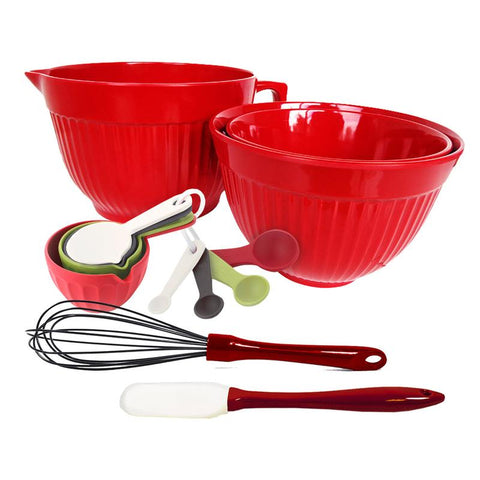
Plastic Free Kitchen Collection
Some other articles you might enjoy:
Things You Can & Cannot Recycle
Why Are You Still Using Plastic In Your Kitchen?
Plants That Help Purify & Clean the Air
References:
1 http://www.napcor.com/PET/whatispet.html
2 http://bearboardlumber.com/bearboard-plastic-advantage/what-is-hdpe.html
3 Dioxins and their effects on human health. (2010, May). Retrieved July 7, 2010, from World Health Organization: http://www.who.int/mediacentre/factsheets/fs225/en/index.html - See more at: http://www.ecolife.com/recycling/plastic/how-to-recycle-pvc-plastic-3.html#_ednref5
4 http://www.pvc.org/en/p/what-is-pvc
5 http://msdssearch.dow.com/PublishedLiteratureDOWCOM/dh_091f/0901b8038091f9e0.pdf?filepath=productsafety/pdfs/noreg/233-00587.pdf&fromPage=GetDoc
6 http://www.ecolife.com/recycling/plastic/how-to-recycle-ldpe-plastic-4.html
7 http://www.creativemechanisms.com/blog/polystyrene-ps-plastic
8 http://isites.harvard.edu/fs/docs/icb.topic967858.files/PolystyreneFactSheets.pdf
9 http://learn.eartheasy.com/2012/05/plastics-by-the-numbers/
Other References:
http://www.healthychild.org/know-your-plastics/
http://naturalsociety.com/recycling-symbols-numbers-plastic-bottles-meaning/
http://greenveg.com/know-your-plastic-recycling-number/
- Gabriella De Luca
- Tags: Bamboo EcoFriendly Molded Bamboo
Melamine VS. Molded Bamboo®
Melamine Vs. Molded Bamboo®
Get the facts about Melamine dinnerware and dishware and learn why Molded Bamboo® is the next big thing.
So what exactly is Melamine?
Melatline resin is created by combining melatline, and organic compound, with formaldehyde using heat and pressure.
Are Melamine Dishes Safe?
- According to the U.S. Food and Drug Administration (FDA), the answer to the question,“ Are melamine dishes safe ?” is yes, but with some restrictions.
- The process of making melatline dinnerware leaves some of the chemical in the plastic, which can leech out very slowly over time into food and drink that comes in contact with the dishes. This is especially common when it comes to hot or acidic substances (microwaves a nono! Same with acidic fruits and juices)
- Heat increases the existing risk of the melamine migrating into the food to an unacceptable level.
Stains & Durability
- Melamine products often develop stains over time. Once the stain appears, it's quite diffcult to get rid of, subsequently to the staining problem, melamine can also be scratched.
- Melamine tableware is nearly impossible to break.The material will often chip around edges if it is handled roughly or without care.
Why isn't Melamine microwave or oven safe?
- They are not microwave safe or oven proof-exposing the dishes to extreme heat can cause the release of these toxins
How did FDA decide what level of melamine in food doesn’t pose a risk to health?
- The risk assessment was conducted by scientists from FDA’s Center for Food Safety and Applied Nutrition and FDA’s Center for Veterinary Medicine, and included a review of the scientific literature on melamine toxicity. Animal studies also provided valuable information for this work. The assessment underwent peer review by a group of experts identified by an independent contractor.
What problems can melamine cause if people eat or drink food contaminated with it?
- Products with melamine contamination above the levels noted in FDA’s risk assessment may put people at risk of conditions such as kidney stones and kidney failure, and some cases of death. Signs of melamine poisoning may include irritability, blood in urine, little or no urine, signs of kidney infection, and / or high blood pressure.
Molded Bamboo® (Molded Bamboo™)
So what exactly is Molded Bamboo®?
Molded Bamboo® Is a patented technology FREE of plastic, melamine, BPA and Safes for humans and pets. Molded Bamboo® is produced with rice starch, and our patened all natural plant based binder, as well as well as bamboo sawdust and bamboo fibers made from fully matured bamboo in well-managed forests. As strong as melamine but 100% chemical and toxin free - making it an entirely safe item to eat, serve, and cook with.

Strong & Versatile
- Bamboo is actually a grass, but can be as strong as steel
- Lightweight & easy to clean
- Bamboo is naturally stain resistant
Environmental Factors
- Creating products out of bamboo aids in cost effective and ecologically responsible alternative to the common issue of clearing our world's rainforest. Bamboo grows to a harvestable height of about 60 feet in just 3-5 years.
- Bamboo naturally replenishes itself by continuously sending up new shoots - does not require replanting!
Health & Safety
- Molded Bamboo® products do not contain any of the harmful chemicals found in PVC, poly-carbonate and other plastics, yet they are just as strong and versatile.
- Made from fully mature bamboo raised in well-managed forests, produced with rice starch and an all natural plant based binder making it an alternative to plastic that’s light on the planet and healthy for you and your family.
- Absolutely no BPA's or Formaldehyde in our Molded Bamboo®
Why isn't Molded Bamboo® Microwave or Oven Safe?
- Because hot spots & cracking may occur, Molded Bamboo® is not microwave or oven safe - HOWEVER will NOT leach chemicals when exposed to heat or acids (because there's no chemicals to be leached!)
Why Molded Bamboo™ is the Ultimate Ecofriendly Choice
Our production and manufacture process is done 100% completely without toxins or chemicals. We use only mature bamboo plants harvested from well-maintained bamboo forests.
Having being made from 100% ecofriendly & plant based materials, Molded Bamboo™ is completely biodegradable, impacting landfill levels and toxins being leached into our dirt and soils.
Molded Bamboo™ items are all extremely easy to wash while bamboo naturally resists stains
Shop Molded Bamboo
Facts & info gathered from:
http://www.fda.gov/Food/ResourcesForYou/Consumers/ucm199525.htm
http://www.dinnerware-shopping-guide.com/plastic-melamine-dinnerware.html
http://melamineproducts.net/dinnerware.html
- Gabriella De Luca
- Tags: Dinnerware Moboo Molded Bamboo
Bamboo Utensils VS Wood Utensils
Bamboo utensils have increasingly become more popular over the years. More and more people are turning to bamboo instead of wood for loads of reasons!
-
Unlike wood, bamboo is not a tree, but actually a grass - but don't be fooled! Bamboo was actually used as reinforcement for concrete instead of steel at one point, and was also used to support bridges (comparably just as strong as steel).
-
Bamboo can grow as much as 35 inches in 24 hours vs 3' to 4' per year for trees that harvest wood
-
An entire bamboo forest can be regenerated in three to five years
-
Bamboo reaches it's full level of maturity before harvesting - about 5-7 years (Wood is about 30 years until harvest)
-
Because Bamboo is naturally anti-bacterial & anti-fungal, bamboo is grown without the use of toxins, pesticides, or fertilizers, as opposed to wooden products.
-
Bamboo is less porous than wood, making them water resistant and stain resistant.
-
Bamboo is stronger than any oak, or wood, and actually has a higher *tensile strength than steel (Bamboo's tensile strength is 28,000 per square inch, and steel's strength is 23,000 per square inch)
-
Absorbs very little moisture, so it won't shrink unlike it's wooden counterparts.
-
Bamboo is harder than maple and oak which makes it the ideal material for a lighter weight, stronger, and superior choice for kitchen utensils and cutting boards when trying to decide between bamboo and wood.
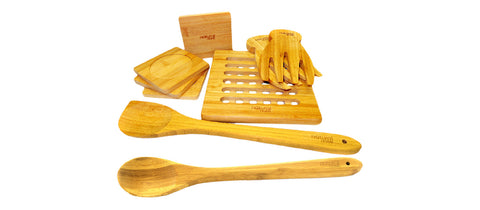
Other Blogs You Might Enjoy:
How To Clean & Care For Your Bamboo
Natural Home Bamboo and Molded Bamboo® makes Going Green in your kitchen so simple!
Get 15% off any Bamboo Item using code Bamboo at checkout
With the rising concern of how potentially harmful plastics can impact our bodies and our planet, Bamboo and Natural Home's Molded Bamboo® offers a healthy alternative, free from BPA's, toxic coatings, and always manufactured responsibly.
We only harvest our Bamboo when it's fully matured, and construct our Molded Bamboo® items out of only bamboo fibers and natural dyes.
*tensile strength definition: the resistance of a material to breaking under tension*
Information gathered and adapted from:
Profitableplantsdigest.com
ehow.com
Midatlanticbamboo.com
- Gabriella De Luca
- Tags: Bamboo EcoFriendly Moboo Molded Bamboo


